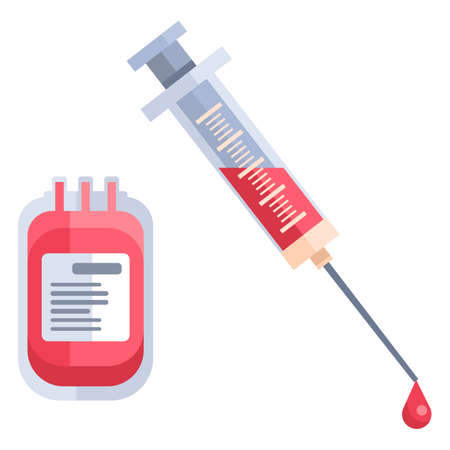Understanding Childhood Diabetes in the UK
Childhood diabetes is becoming an increasingly significant health concern within the UK, with both Type 1 and Type 2 forms affecting British children and their families. Type 1 diabetes is the most common among children, accounting for over 90% of paediatric cases. This autoimmune condition typically presents suddenly and requires lifelong management, while Type 2 diabetes, though less prevalent in children, is rising due to lifestyle factors such as diet and physical inactivity. Recognising early symptoms—such as frequent urination, excessive thirst, unexplained weight loss, and fatigue—is crucial for parents and caregivers. These signs often develop rapidly in children and can quickly progress to a medical emergency if not addressed. In the UK context, timely identification of these symptoms is vital due to the risk of diabetic ketoacidosis (DKA), a life-threatening complication especially common at diagnosis or during periods of illness. With increasing awareness and improved NHS support systems, British families are better positioned than ever to manage diabetes episodes effectively, but understanding the specific risks and patterns seen in local children remains key to ensuring prompt emergency care.
2. Recognising Emergency Diabetic Episodes
Identifying diabetic emergencies swiftly is essential for the safety and wellbeing of children with diabetes, whether at home or in a UK school setting. Two primary emergencies to be aware of are hypoglycaemia (low blood sugar) and hyperglycaemia (high blood sugar). Both can escalate quickly if not managed appropriately, so understanding their early warning signs is crucial for teachers, carers, and parents.
How to Spot Hypoglycaemia (Low Blood Sugar)
Hypoglycaemia often develops rapidly. It’s important for staff and family members to recognise the subtle and more obvious symptoms. In UK schools, it is recommended that all staff receive basic awareness training on these signs. The following table outlines typical symptoms you might notice in children:
| Early Signs | Later Signs |
|---|---|
| Irritability or sudden mood changes Looking pale Sweating Trembling or shakiness Hunger Tiredness or yawning Difficulty concentrating |
Confusion Slurred speech Loss of coordination Drowsiness Seizures (in severe cases) Unconsciousness |
Typical Scenarios in Schools and Homes
In a classroom setting, a child may suddenly become withdrawn or start behaving out of character—perhaps refusing to participate or struggling with simple tasks. At home, you might notice your child feeling excessively hungry, becoming unusually tearful, or complaining of feeling ‘wobbly’. Quick action—offering fast-acting carbohydrates like glucose tablets or fruit juice—is advised as per NHS guidelines.
How to Identify Hyperglycaemia (High Blood Sugar)
Hyperglycaemia tends to develop more slowly but can still pose significant risks if left untreated. Key indicators include:
- Increased thirst and frequent urination
- Tiredness and lethargy
- Headaches
- Blurred vision
- Stomach pain or nausea (in advanced cases)
- The smell of pear drops on the breath (a sign of possible ketoacidosis)
School Example: When to Take Action
If a pupil is asking to visit the loo more often than usual, seems excessively thirsty during lessons, or complains of blurred vision or feeling unwell, it’s vital to check their blood glucose level straight away. If readings are consistently high, follow the child’s individual healthcare plan and seek advice from NHS 111 or emergency services if necessary.
Summary Table: Key Differences Between Hypoglycaemia and Hyperglycaemia Symptoms in Children
| Hypoglycaemia (Low) | Hyperglycaemia (High) | |
|---|---|---|
| Main Onset Speed | Sudden/rapid | Gradual/slower |
| Mood/Behaviour Changes | Irritable, confused, shaky | Lethargic, tired, irritable |
| Physical Symptoms | Sweating, pallor, hunger | Thirsty, frequent urination, headache |
| Serious Complications | Seizure, unconsciousness | Ketoacidosis, coma (rare but serious) |
| Immediate Action Required? | Yes – treat with glucose immediately | Monitor & seek medical advice if persistent/high readings or symptoms worsen |
The ability to recognise these signs promptly—using language and examples familiar within UK homes and schools—forms the foundation of effective emergency care for childhood diabetic episodes.

3. UK Emergency Response Standards and Protocols
When a child experiences a diabetic episode in the UK, swift and standardised action is essential. The National Health Service (NHS) provides clear guidelines to ensure that children receive timely and effective emergency care, minimising risks and promoting recovery.
NHS Guidelines for Diabetic Emergencies
The NHS recommends immediate identification of symptoms such as confusion, unusual behaviour, rapid breathing, or unconsciousness in children with diabetes. Quick assessment of blood glucose levels is crucial. If hypoglycaemia (low blood sugar) is confirmed, the child should be given a fast-acting carbohydrate like glucose tablets, sugary drinks, or gel if conscious. In cases of severe hypoglycaemia where the child is unresponsive or unable to swallow, emergency glucagon injection kits should be used according to training.
Ambulance Service Procedures
The UK ambulance services are trained to respond rapidly to paediatric diabetic emergencies. Upon arrival, paramedics will check vital signs and blood glucose levels, administer appropriate treatment (such as intravenous glucose or glucagon), and determine whether hospital admission is necessary. They communicate closely with hospital teams to ensure continuity of care during transfer.
Response Protocols for Schools and Families
Schools must have an Individual Healthcare Plan (IHP) for every student with diabetes, as outlined by government guidance. Staff should be trained to recognise symptoms and administer first aid or medication promptly. Families are encouraged to educate themselves on managing episodes at home and to share detailed care instructions with schools and childcare providers. The current standards emphasise collaborative planning between parents, healthcare professionals, and educational staff to create a safe environment for children living with diabetes.
4. Essential First Aid Steps for Parents and Carers
When a child with diabetes experiences a medical episode, prompt and effective first aid is crucial. In the UK, parents and carers should be familiar with specific steps tailored to local healthcare guidelines. The following practical advice ensures immediate and appropriate action at home before professional help arrives.
Recognising the Signs
Early identification of hypoglycaemia (low blood sugar) or hyperglycaemia (high blood sugar) can make a significant difference. Common symptoms include confusion, sweating, shakiness (for hypo), or extreme thirst, frequent urination, and drowsiness (for hyper). Always have a glucometer handy to confirm the situation.
Immediate Actions: What to Do Next
| Situation | Action Steps | UK-Specific Guidance |
|---|---|---|
| Hypoglycaemia (Low Blood Sugar) |
|
If child is unconscious or unable to swallow, do not give food/drink. Use Glucagon injection if prescribed and call 999 immediately. |
| Hyperglycaemia (High Blood Sugar) |
|
NHS 111 is available for non-emergency guidance; dial 999 if severe symptoms like vomiting or unconsciousness occur. |
The Importance of an Emergency Kit
Keep a diabetes emergency kit accessible at all times, especially when away from home. It should include:
- Glucose tablets or gels
- Bottle of juice or non-diet fizzy drink
- Biscuit/cracker packs
- Glucometer with extra strips and batteries
- Ketonestix (for checking urine ketones)
- Glucagon injection pen (if prescribed)
- NHS contact numbers and care plan information sheet
Liaising with UK Healthcare Services
If the episode cannot be managed at home, contact your GP during surgery hours or NHS 111 out-of-hours for advice. For life-threatening situations (seizures, loss of consciousness), always call 999 for ambulance services—paramedics in the UK are trained to manage paediatric diabetic emergencies efficiently.
5. When and How to Seek Professional Help
Recognising when to escalate care is crucial in the event of a diabetic episode in children. The UK has a robust emergency medical structure, with specific services tailored to different levels of urgency. Here’s how parents and carers can make informed decisions on seeking professional help.
When to Contact NHS 111
NHS 111 is a non-emergency helpline available 24/7 for medical advice. You should call NHS 111 if your child is experiencing mild to moderate symptoms such as persistent high or low blood sugar that does not respond to home management, mild confusion, or you are unsure about what steps to take next. NHS 111 advisors can provide guidance, arrange urgent GP appointments, or escalate care if necessary.
When to Ring 999
Dial 999 immediately for life-threatening emergencies. This includes situations where your child is unconscious, having seizures, experiencing severe breathing difficulties, or showing signs of diabetic ketoacidosis (such as rapid breathing, vomiting, or severe dehydration). Paramedics can provide immediate life-saving treatment en route to hospital.
Visiting A&E (Accident & Emergency)
If your child’s condition worsens despite following your diabetes action plan—for example, persistent vomiting, severe abdominal pain, or confusion—take them directly to your nearest A&E department. The UK’s A&E units are equipped to manage acute paediatric diabetic emergencies promptly.
Trust Your Instincts
It’s important to trust your instincts as a parent or carer. If something feels seriously wrong—even if the situation doesn’t clearly fit the criteria above—err on the side of caution and seek help. Prompt action can be life-saving during diabetic episodes.
6. Long-Term Management and Support Networks
Ensuring effective long-term management for children with diabetes in the UK involves a comprehensive approach that goes well beyond emergency care. Sustained support is crucial for helping young patients thrive at home, at school, and within their communities. Understanding the resources and networks available can make a significant difference in day-to-day life and overall wellbeing.
Ongoing Medical Care
Children diagnosed with diabetes are typically under the care of a specialist paediatric diabetes team within the NHS. These multidisciplinary teams include consultants, diabetes specialist nurses, dietitians, and psychologists who provide regular check-ups, monitor blood glucose levels, and offer tailored advice on diet and exercise. Annual reviews ensure that growth, development, and glycaemic control remain on track, while adjustments to treatment plans are made as needed.
Support in Schools
UK schools have legal responsibilities under the Children and Families Act 2014 to support pupils with medical conditions such as diabetes. Individual Healthcare Plans (IHPs) are developed in partnership with parents, healthcare professionals, and school staff to outline daily management routines, emergency procedures, and contact information. Many schools also ensure staff receive training from local diabetes nursing teams so they can confidently assist with insulin administration or recognise symptoms of hypo- and hyperglycaemia.
Charitable Organisations
Several charities provide invaluable assistance to families managing childhood diabetes. Diabetes UK offers resources for both children and carers, including helplines, downloadable guides, local support groups, family events, and educational workshops. JDRF UK (Juvenile Diabetes Research Foundation) funds research into Type 1 diabetes while also supporting families through advocacy programmes and peer networks. Local community groups often facilitate connections between families facing similar challenges.
Resources for Carers and Young People
A range of practical tools is available to empower children living with diabetes and their carers. Free mobile apps endorsed by the NHS help track blood sugar readings and medication schedules. The “MyType1Diabetes” online platform provides tailored e-learning courses for young people. For emotional wellbeing, Childline offers confidential counselling services to help children cope with the social impact of living with a long-term condition.
Navigating Life Beyond Hospital Walls
With robust medical oversight, proactive school engagement, charitable support systems, and digital resources at hand, families can feel reassured that managing childhood diabetic episodes is not a journey they have to make alone. Building strong support networks empowers children to lead active, fulfilling lives while minimising risks—ensuring high standards of care extend far beyond emergency moments.


